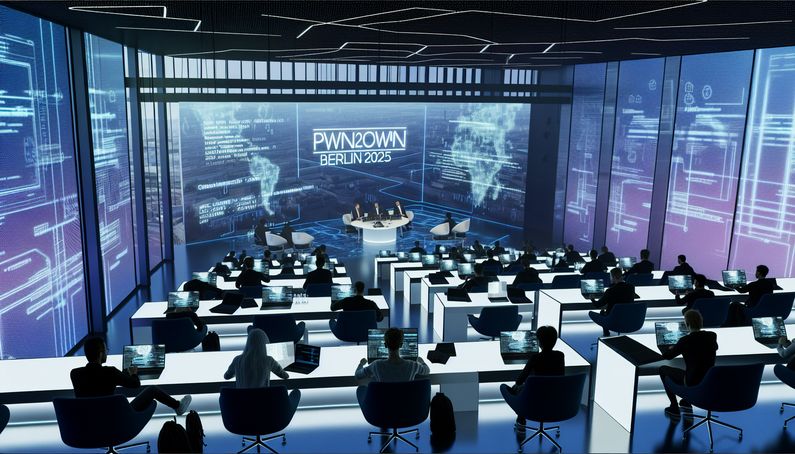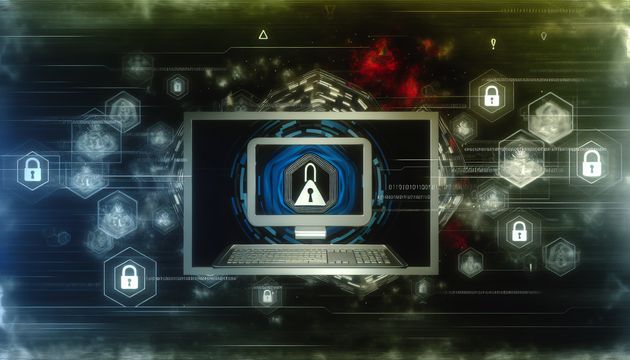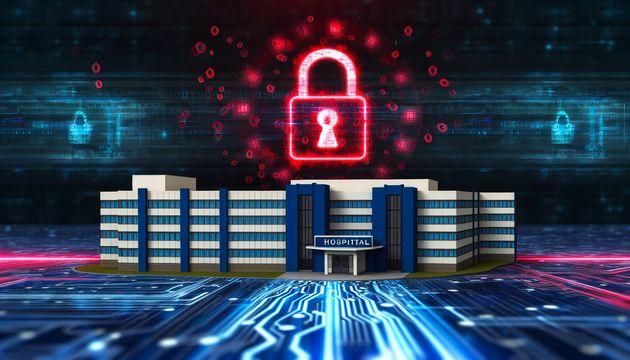
Pwn2Own Berlin 2025: Day Two Highlights and Breakthroughs
Pwn2Own Berlin 2025 has once again proven to be a pivotal event in the cybersecurity calendar, showcasing the latest in zero-day exploits and security research. This year’s competition, held in Berlin, introduced an exciting new category focused on artificial intelligence, reflecting its growing role in enterprise environments. On the second day, participants demonstrated their skills by targeting critical enterprise technologies such as VMware ESXi and Microsoft SharePoint, revealing vulnerabilities that could potentially compromise sensitive data and system integrity. The event not only highlighted the vulnerabilities in traditional enterprise systems but also underscored the emerging threats in AI-driven environments, with exploits targeting systems like Redis and Nvidia’s Triton Inference Server.
Day Two Highlights of Pwn2Own Berlin 2025
Exploits in Enterprise Technologies
Day two of the Pwn2Own Berlin 2025 hacking competition saw a continuation of innovative exploits targeting enterprise technologies. The event, which focuses on enterprise security, provided a platform for security researchers to demonstrate their prowess in identifying and exploiting zero-day vulnerabilities. Notably, the competition introduced an AI category for the first time, reflecting the growing importance of artificial intelligence in enterprise environments.
VMware ESXi and Microsoft SharePoint Exploits
On the second day, hackers successfully targeted VMware ESXi and Microsoft SharePoint, two critical components frequently used in enterprise settings. The VMware ESXi exploit involved a sophisticated zero-day vulnerability that allowed attackers to gain unauthorized access to virtual machines. Similarly, the Microsoft SharePoint exploit leveraged a previously unknown flaw to escalate privileges and potentially exfiltrate sensitive data stored within SharePoint sites.
Red Hat Enterprise Linux Privilege Escalation
Security researchers demonstrated a privilege escalation exploit on Red Hat Enterprise Linux, utilizing a use-after-free vulnerability. This type of vulnerability occurs when a program continues to use memory after it has been freed, potentially allowing attackers to gain root access. The successful demonstration underscored the importance of continuous monitoring and patching of Linux-based systems to mitigate such risks.
AI Category Breakthroughs
The introduction of an AI category at Pwn2Own Berlin 2025 marked a significant milestone in the competition’s history. Researchers were tasked with exploiting vulnerabilities in AI systems, which are increasingly being integrated into enterprise applications.
Redis and Nvidia Triton Inference Server Exploits
Wiz Research security researchers showcased an innovative use-after-free zero-day exploit targeting Redis, a popular open-source database system. This exploit demonstrated the potential risks associated with AI-driven data processing environments. Additionally, Qrious Secure successfully chained four security flaws to compromise Nvidia’s Triton Inference Server, a critical component in AI model deployment. These exploits highlighted the need for robust security measures in AI infrastructures to prevent unauthorized access and data breaches.
Financial Implications and Awards
The financial rewards for successful exploits at Pwn2Own Berlin 2025 were substantial, reflecting the high stakes involved in identifying zero-day vulnerabilities. On the second day alone, competitors were awarded a total of $260,000 for their successful demonstrations. This brought the cumulative earnings over the first two days of the contest to $695,000, underscoring the value placed on cybersecurity research and the identification of critical vulnerabilities.
Oracle VirtualBox Guest-to-Host Escape
A standout demonstration on day two involved an out-of-bounds write exploit targeting Oracle VirtualBox. This exploit enabled a guest-to-host escape, allowing attackers to execute arbitrary code on the host machine from within a virtualized environment. The successful demonstration by Viettel Cyber Security highlighted the persistent risks associated with virtualization technologies and the need for continuous security assessments to protect against such sophisticated attacks.
Overall Impact on Enterprise Security
The exploits demonstrated on day two of Pwn2Own Berlin 2025 underscored the evolving threat landscape faced by enterprise technologies. The competition highlighted the importance of proactive security measures and the need for organizations to stay ahead of potential vulnerabilities. By identifying and addressing zero-day exploits, security researchers play a crucial role in safeguarding enterprise environments against emerging threats.
In conclusion, the second day of Pwn2Own Berlin 2025 showcased a diverse array of exploits targeting critical enterprise technologies. From virtualization platforms to AI systems, the competition highlighted the need for robust security measures to protect against sophisticated attacks. The financial rewards and recognition for successful exploits underscored the value of cybersecurity research in identifying and mitigating zero-day vulnerabilities.
Final Thoughts
The second day of Pwn2Own Berlin 2025 underscored the dynamic and evolving nature of cybersecurity threats facing enterprise technologies. The successful exploits demonstrated the critical need for continuous vigilance and proactive security measures. As highlighted by the VMware ESXi and Microsoft SharePoint vulnerabilities, organizations must prioritize patch management and system updates to safeguard against unauthorized access and data breaches. Furthermore, the introduction of the AI category and the subsequent exploits on Redis and Nvidia’s Triton Inference Server emphasize the importance of securing AI infrastructures. The financial rewards and recognition awarded to participants reflect the high stakes involved in cybersecurity research and the ongoing battle to protect enterprise environments from sophisticated attacks.
References
- Hackers exploit VMware ESXi, Microsoft SharePoint zero-days at Pwn2Own. (2025). Bleeping Computer. https://www.bleepingcomputer.com/news/security/hackers-exploit-vmware-esxi-microsoft-sharepoint-zero-days-at-pwn2own/



